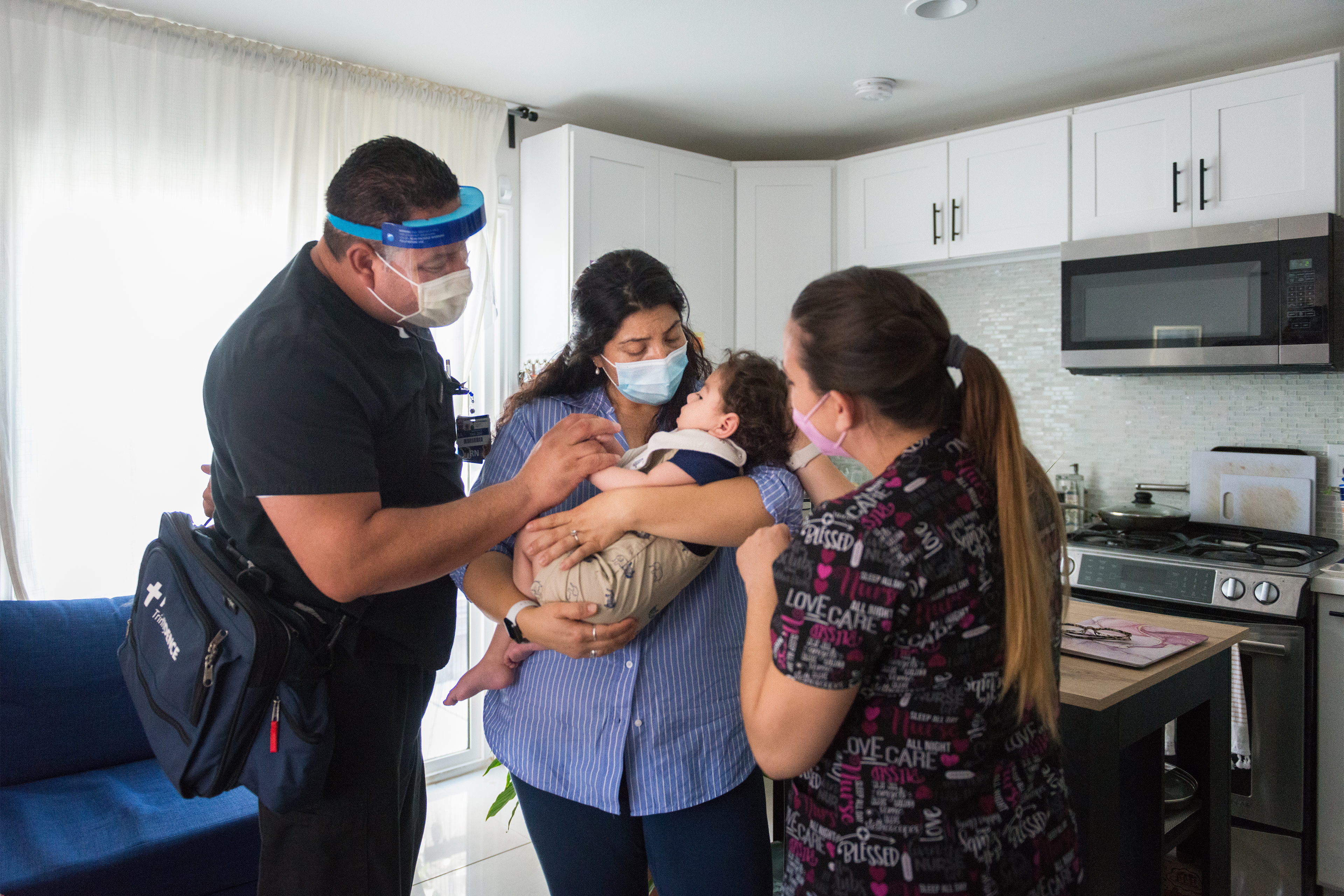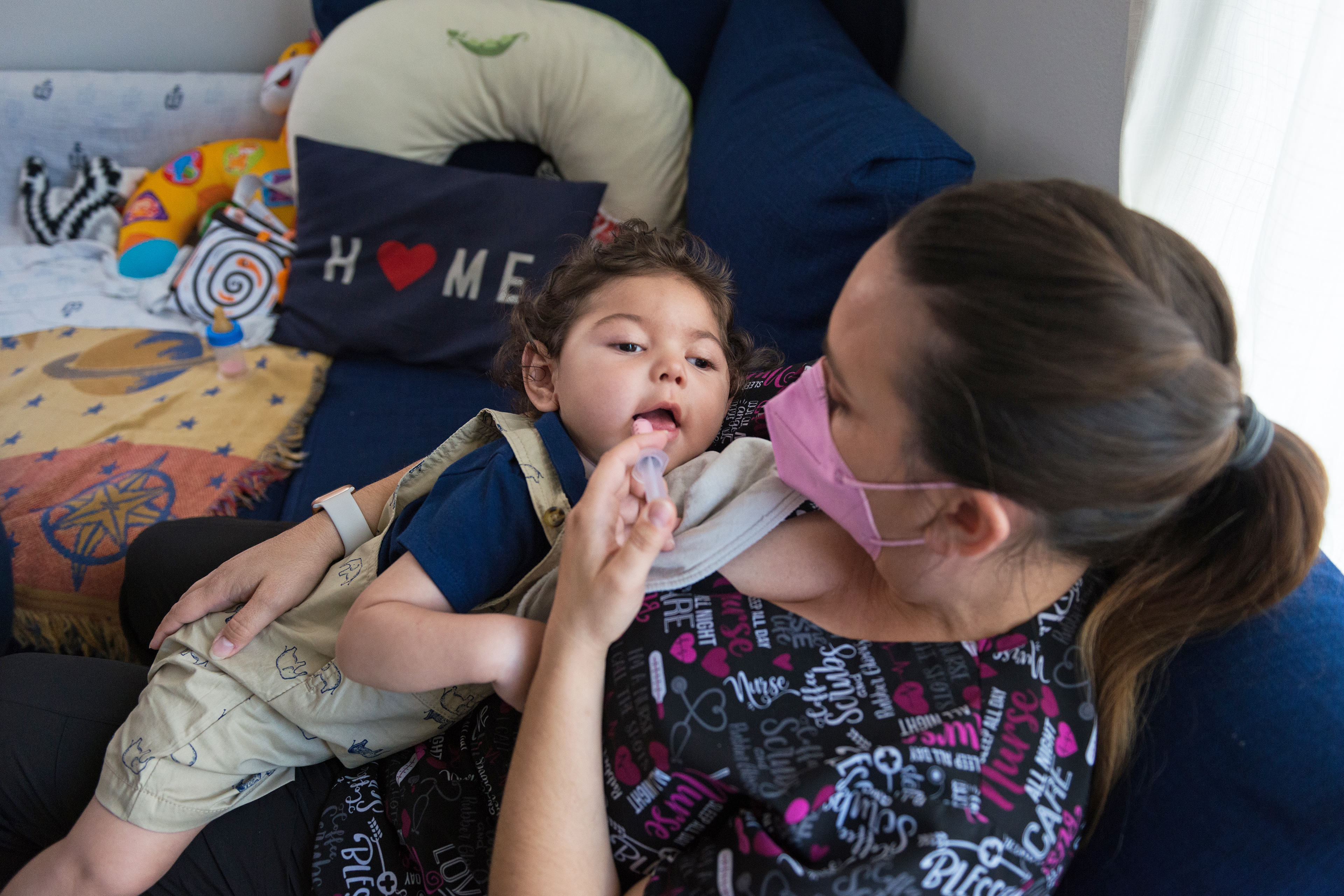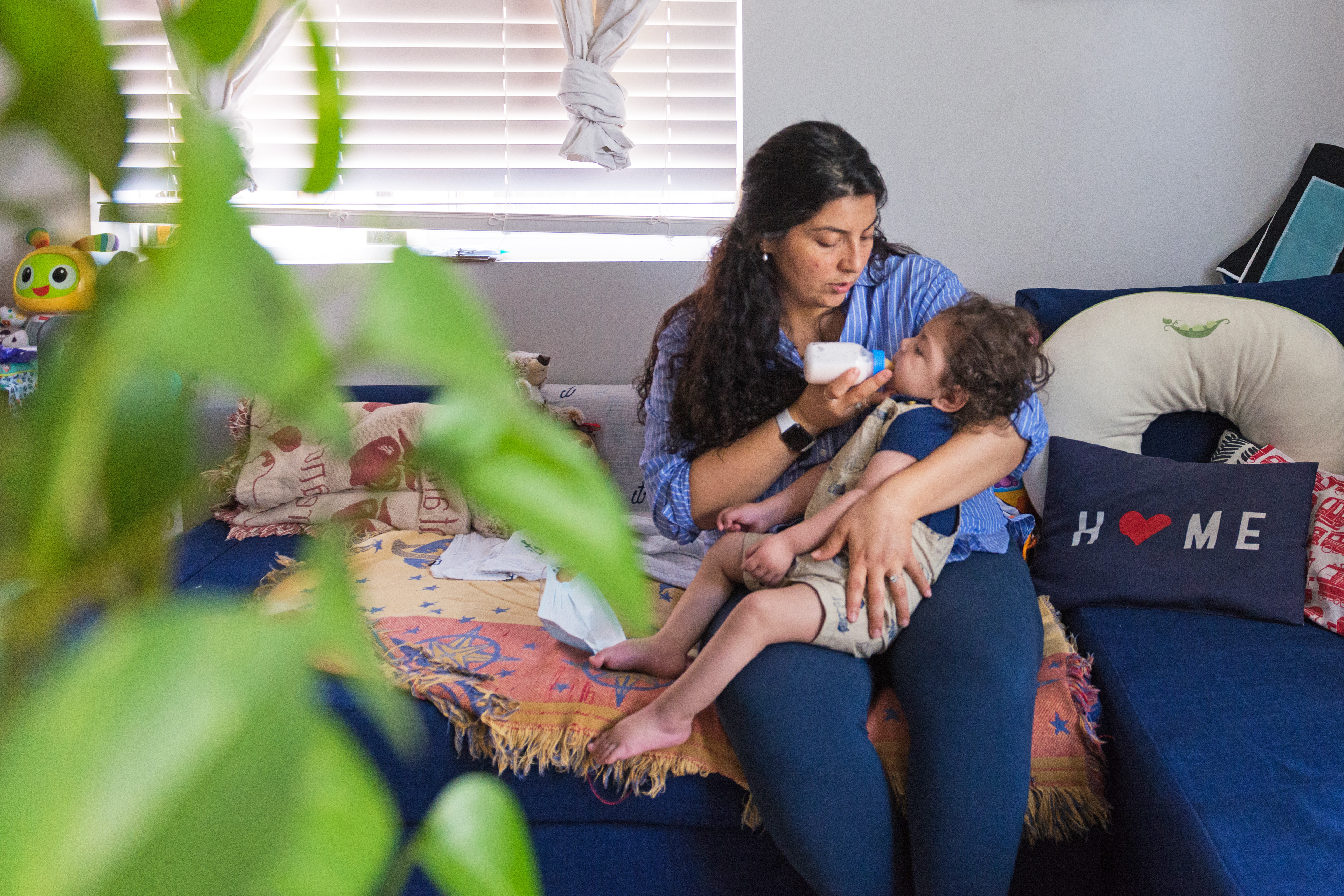Dr. Steven-Huy Han, a UCLA liver specialist, has prescribed Ocaliva to a handful of patients, although he’s not sure it helps.
As advertised, the drug is lowering levels of an enzyme called alkaline phosphatase in their blood, and that should be a sign of healing for their autoimmune disease, called primary biliary cholangitis. But “no one knows for sure,” Han said, whether less enzyme means they won’t get liver cancer or cirrhosis in the long run.
“I have no idea if the drug will make them better,” he said. “It could take 10, 20, or 30 years to know.”
Ocaliva came to market through an FDA review process created 30 years ago called accelerated approval, which allows pharmaceutical companies to license promising treatments without proving they are effective. It has become a common path to market — accounting for 14 of the 50 approvals of novel drugs in 2021 compared with four among 59 in 2018, for example.
The FDA’s accelerated approval is usually based on a “surrogate marker” of effectiveness — evidence of lower viral loads for HIV, for example, or shrinking tumors for cancer. Debate rages over the validity of some of these stand-ins, and some of the drugs.
“If you’ve got a game-changing drug that truly is going to make a difference, you don’t need surrogate markers to prove that. If it’s effective, patients will survive longer,” said Dr. Aaron Mitchell, an oncologist at Memorial Sloan Kettering Cancer Center. The shortened approval process, he said, is one reason “we are getting a lot of marginally effective, not clinically meaningful, more expensive drugs on the market.”
Many of the estimated 100,000 U.S. patients with primary biliary cholangitis — most are women — had few other treatment options. And their testimony, at FDA meetings and in online forums, helped boost Ocaliva to FDA approval in 2016. Its list price is about $100,000 a year.
After Deborah Sobel’s sister Sarah Jane Kiley died of liver complications in 2006 at age 47, Sobel met with members of Congress and bankers to urge support for the drug and its maker, Intercept Pharmaceuticals. Although the trial required for accelerated approval was too short to show long-term improvement, the drug lowered alkaline phosphatase levels in many patients who could tolerate taking it. For some, the side effects proved too much.
Sobel, who also has the disease, began taking Ocaliva six years ago. Her last liver scan “looked like I had rolled back some of the damage,” said Sobel, 67, of Naperville, Illinois. “I can’t attribute that to the drug, but I’m religious about taking it.”
Ocaliva’s profile is typical for the FDA’s accelerated program. In 2019 the drug ranked seventh in Medicare spending — about $54 million — among products approved through the program, which launched in 1992. That same year, Congress passed the Prescription Drug User Fee Act, or PDUFA, a law committing the drug industry to pay so-called user fees to help fund the FDA’s drug approval process.
The fees have steadily swollen in importance, accounting for $2.9 billion of the agency’s $6.5 billion 2022 budget, including two-thirds of the drug regulation budget, and the work of at least 40% of the FDA’s 18,000 employees. Companies in recent years have paid between $2.5 million and $3 million to have each drug application reviewed.
In most cases, companies that win accelerated approval must submit additional data, after the drug goes to market, that proves it cures or successfully treats the disease.
It turns out that some surrogate markers are better than others. Critics lashed out at the agency in 2021 after it approved Aduhelm for Alzheimer’s disease based on the drug’s capacity to dissolve clumps of amyloid plaques in the brain. Despite that evidence, most patients, who were in the earliest stages of Alzheimer’s, didn’t get better, and over a third suffered brain swelling, a frightening and painful side effect.
When it approved Ocaliva, the FDA required Intercept to conduct another trial to produce evidence of its benefit. But the company in 2021 stopped the trial, saying it was unable to enroll enough patients. To that point, the trial had shown no clinical benefit for patients on the drug. Now, Intercept is asking the FDA to accept a combination of evidence, including studies that it says show patients taking the drug fared better than “external controls” — patients whose health records indicate they would have qualified for Ocaliva but did not receive it.
The FDA already uses such “real-world evidence” for post-market reviews of the safety of drugs, vaccines, and medical devices. But when it comes to drug approvals, records collected for routine health care are often erroneous and usually can’t replace the rigorous evidence of randomized controlled trials.
Policy Born of Impatience
Impatience — among drug companies, investors, patients, and politicians — created the user fee agreements and accelerated-approval pathway, and that impatience, for profits and cures, fuels both programs.
In the late 1980s and early 1990s, the FDA was under tremendous pressure. With AIDS cutting a deadly swath through the gay community, activists held symbolic die-ins at FDA headquarters, demanding approval of new drugs. Meanwhile, conservative groups, frustrated that approvals could take three years or more, debated changing the FDA’s charter to put drugs on the market after cursory reviews. Democrats generally were skeptical of industry user fees — and many still are. During a June debate, Sen. Bernie Sanders (I-Vt.) said drug companies might be “charging outrageous prices” because so much of FDA’s regulatory budget “comes not from taxpayers who want more access to prescription drugs but from the pharmaceutical industry itself.”
The user fees came about after then-FDA Commissioner David Kessler and industry leader Gerald Mossinghoff agreed that companies would pay sums earmarked for the agency to modernize practices, hire more staff, and set deadlines for its reviews.
The impact was immediate. AIDS drugs were the first notable success beginning in 1995, turning HIV from a death sentence into a chronic but manageable disease.
One way user fees have sped reviews is by expanding communications between industry members and the FDA. Before, “it was pretty challenging to get a meeting with FDA,” said Dr. John Jenkins, a senior agency official for 25 years and now an industry consultant. By 2019, the FDA was hosting over 3,000 drug industry meetings each year. This has dramatically changed how companies operate, he said, providing more certainty about whether they are collecting the data FDA needs for its reviews.
Although FDA-regulated products account for about a fifth of every dollar spent by U.S. consumers, Congress has never shown appetite for dramatically increasing its budget, so every five years the user fee renewals become must-pass legislation. This is their year. The user fee accords — one for each brand-name, generic, and over-the-counter drug, as well as for animal drugs, biologics, and medical devices — are packed with new programs, tweaks to old ones, regulatory deadlines, and other items negotiated by the FDA and industry, with Congress tacking its priorities onto the authorizing bill.
The fee agreements are negotiated behind closed doors — industry and FDA officials met more than 100 times to prepare the 2022 accords. At least two industry negotiators were former FDA officials, and the lead FDA negotiator, Dr. Peter Stein, was a Merck and Janssen veteran before arriving at the FDA in 2016. The FDA held six public hearings on the agreements, then announced it did not intend to incorporate a single change.
The bill stalled over the summer because of disagreements over riders affecting generic drugs, lab tests, dietary supplements — and accelerated approval. The final bill, part of a stopgap spending measure, stripped out language that would have made it harder for accelerated products to stay on the market if manufacturers failed to produce evidence of lasting value in a timely way. Stephen Ubl, president of the industry trade group Pharmaceutical Research and Manufacturers of America, or PhRMA, called the slimmed-down bill “a win for patients, biopharmaceutical innovation and regulatory predictability.”
‘I Feel Divided’
Ocaliva patients and doctors are generally grateful to have the drug, though some physicians interviewed for this article said they wouldn’t prescribe it. The drug can seriously harm patients who already have cirrhosis of the liver and produces side effects such as severe itching. But some patients can’t tolerate, or fail to benefit from, the less expensive drug ursodiol, the other main treatment for primary biliary cholangitis. And some doctors who’ve studied Ocaliva believe the drug may slow liver damage.
“I feel divided about this,” said Dr. Renumathy Dhanasekaran, an assistant professor of gastroenterology and hepatology at the Stanford University School of Medicine. “As a scientist, the accelerated approval process concerns me, but as a physician treating patients with a very challenging disease, translating some of these drugs to the clinic faster is attractive.”
While final approval of Ocaliva for primary biliary cholangitis is pending, Intercept is seeking a broader, lucrative market for the drug: as many as 13 million Americans who have non-alcoholic steatohepatitis, or NASH, a variant of fatty liver disease. The only current treatment is radical weight loss. The FDA is expected to rule on that application in 2023.
Ocaliva and Aduhelm are far from the only accelerated approval drugs whose long-term impact remains uncertain. Only a fifth of the cancer drugs approved through the platform kept people alive longer than other treatments against which they were tested, according to a 2019 study co-authored by Dr. Bishal Gyawali, an associate professor of medical oncology and public health at Queen’s University in Canada.
FDA’s cancer branch has tried to remove ineffective accelerated approval drugs from the market, and says it may begin demanding that drugmakers start confirmatory trials before receiving accelerated approval for their products. But for now, many drugs with uncertain survival benefits remain on the market. Ibrance, an oral breast cancer drug that brought Pfizer nearly $5 billion in annual revenue in recent years, falls into this category.
FDA approved Ibrance for breast cancer in 2015 after a study showed it slowed tumor progression for a full year longer than aromatase inhibitors, then the standard of care. Although Pfizer won final approval through a confirmatory trial, less tumor growth apparently did not translate into longer survival for patients on Ibrance, subsequent studies indicated.
Still, with new cancer drugs continually coming to market, it makes sense for the FDA to approve promising new medications even if their benefits are incremental, said Dr. Matthew Goetz, a breast cancer specialist at the Mayo Clinic.
“All of us were excited about Ibrance when it came out,” he said. “It was an oral drug, very well tolerated, and it pushed off the time before a patient needed chemotherapy.”
Gyawali, another breast cancer expert, said he has treated his patients with Ibrance. “Many oncologists would agree that it’s a good tool to have in their toolbox.”
KHN (Kaiser Health News) is a national newsroom that produces in-depth journalism about health issues. Together with Policy Analysis and Polling, KHN is one of the three major operating programs at KFF (Kaiser Family Foundation). KFF is an endowed nonprofit organization providing information on health issues to the nation.
USE OUR CONTENT
This story can be republished for free (details).
from Health Industry – Kaiser Health News




